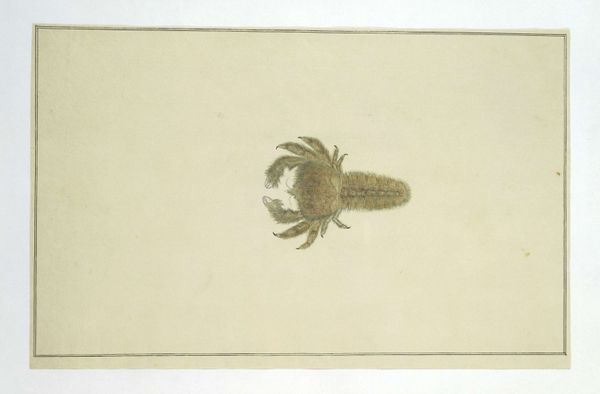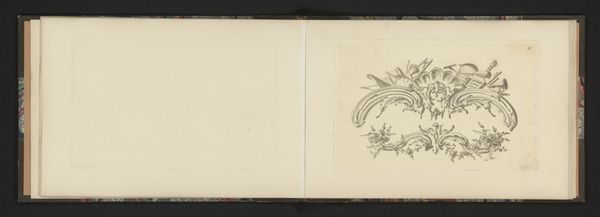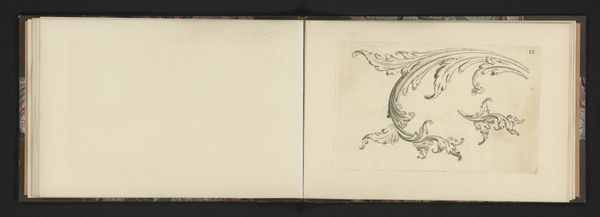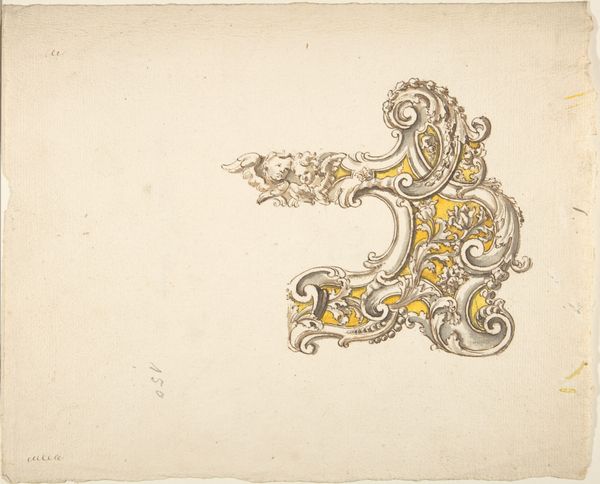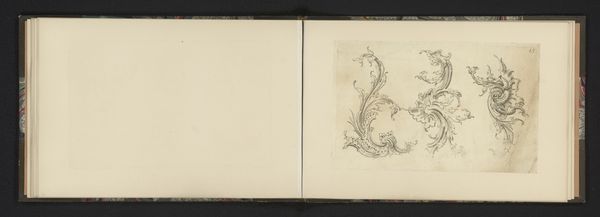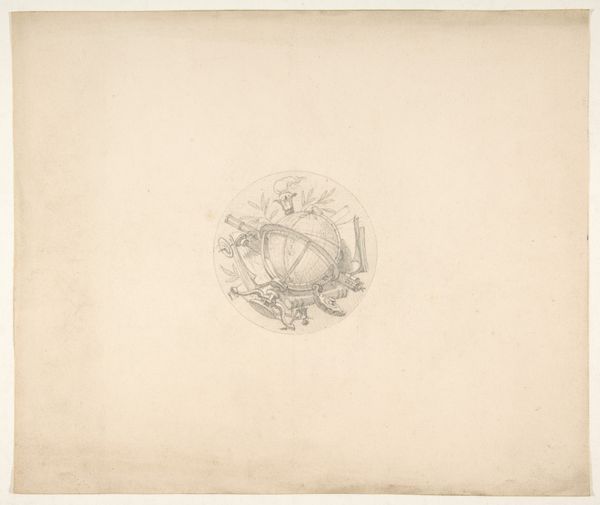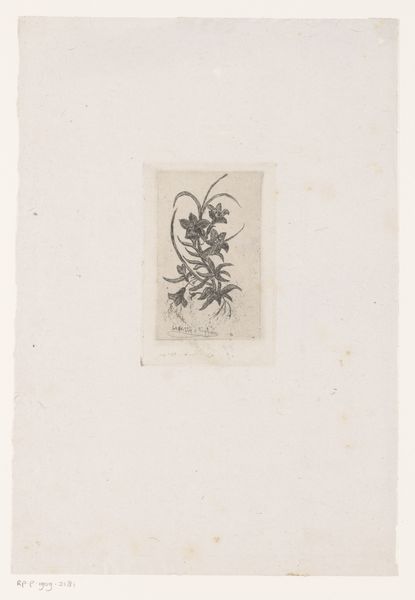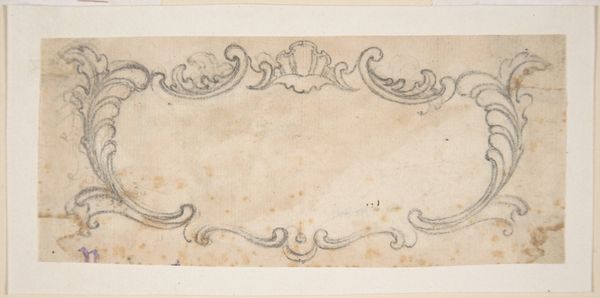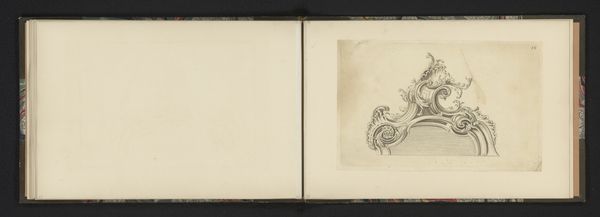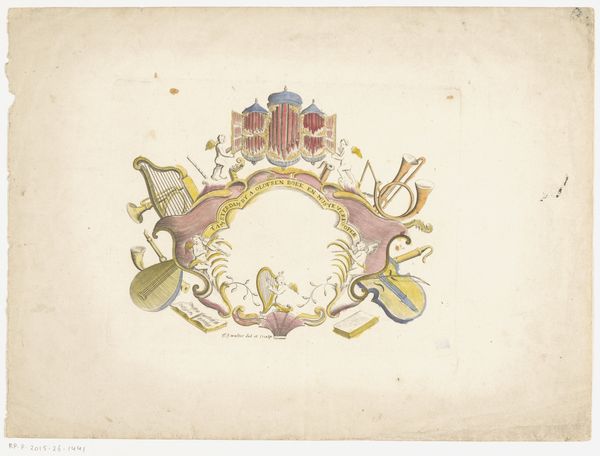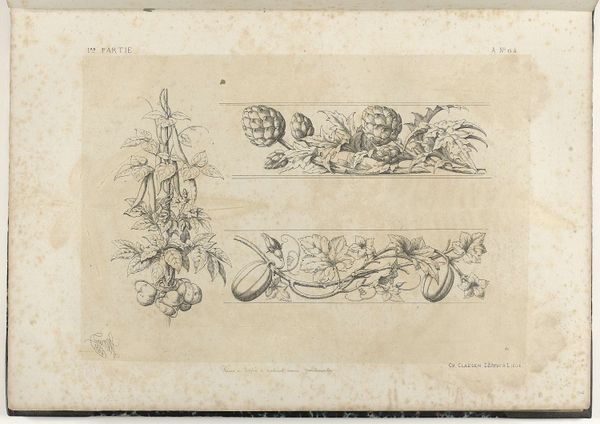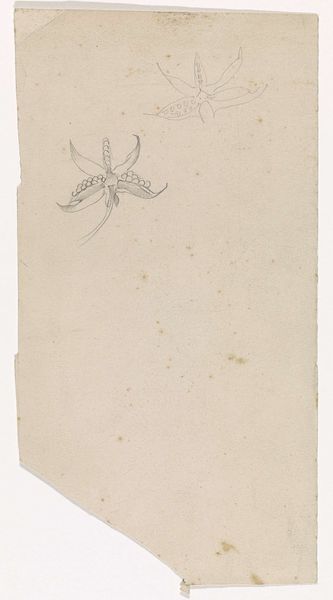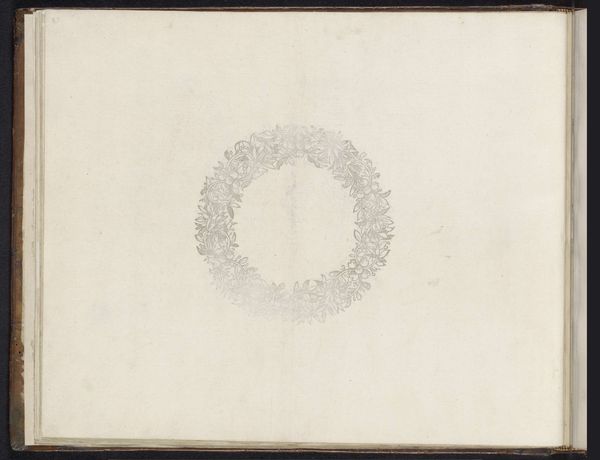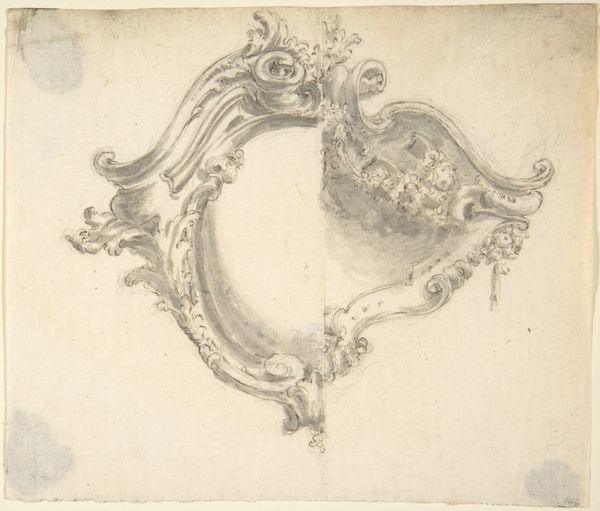
drawing, watercolor
pencil drawn
drawing
light pencil work
animal
pencil sketch
watercolor
line
pencil work
watercolour illustration
naturalism
realism
Dimensions: height 660 mm, width 480 mm, height 411 mm, width 262 mm, height mm, width mm
Copyright: Rijks Museum: Open Domain
Curator: Well, hello there. Before us, we have a drawing, tentatively titled "Crab (probably of the Potamon genus)," dating back to 1777, crafted with watercolor and pencil. What's your first reaction to it? Editor: Stark. Vulnerable. Placed in this vast white space. It is almost as if the specimen, devoid of context, reveals itself for an audience, stripped bare. Curator: Exactly! It's exposed, laid bare by this Gordon chap. You can almost feel the scratch of his pencil, his obsessive gaze studying the creature. Robert Jacob Gordon, by the way, was more than just an artist; he was a military man, a Dutch explorer, and an amateur naturalist. A peculiar mix, right? Editor: A collision of powers is always going on when colonial officials take up an interest in the landscape, one which is often tied up with land appropriation. There is an ambivalence about documenting the very thing that might be taken away. Do we even know who this crab belonged to? Or was this "open source" material? Curator: Well, what strikes me is the sheer level of observation here. It's so scientifically precise, yet...it still feels alive somehow. The way he captures the texture of its shell, those bristly legs…you sense Gordon's awe, perhaps. Do you agree? Or do you see just appropriation here? Editor: The level of observation might equally come from the impulse to catalogue and inventory, as a precursor to controlling that which is seen. And let's be real, "awe" can be a slippery mask for domination. The Age of Enlightenment was also a time of savage expansion, under the guise of pure reason and seeing. Curator: That's dark, but probably true! Maybe it's the lack of a defined background that makes me focus on the crab itself as this lonely, individual thing. Without a setting, it’s as though we must acknowledge it, see its intricate little face and beady eye… Editor: And what happens when it stares back? Do we become complicit in a long legacy of extraction by continuing to look and to define? Are we just researchers echoing Gordon's survey in the gallery space today? Curator: Hmm. Maybe, but isn't there still some beauty to find in scientific endeavor too? Editor: Beauty, yes, but not innocence. Let us look with eyes wide open! Curator: Hear, hear. What a can of worms, eh?
Comments
No comments
Be the first to comment and join the conversation on the ultimate creative platform.
